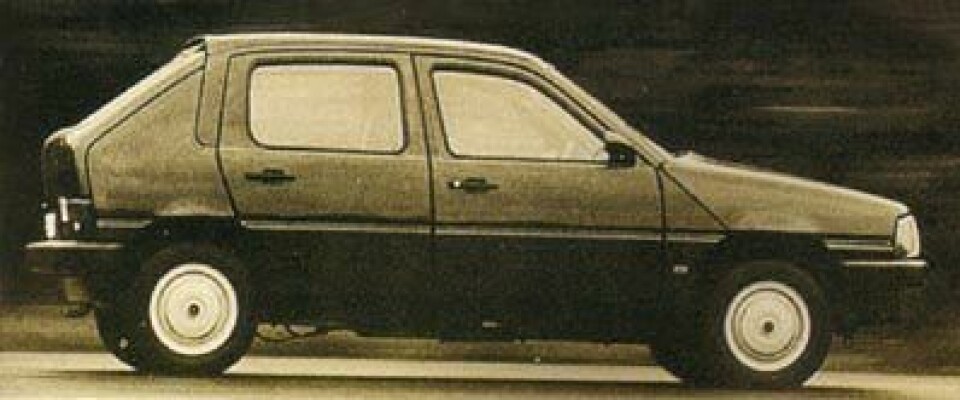
Concept Car of the Week: Fiat VSS I.DE.A (1981)
Architect Renzo Piano’s early take on the modular car
The Institute of Development in Automotive Engineering, or I.DE.A for short, was founded in Turin in 1978 by the entrepreneur Franco Mantegazza and the architect Renzo Piano. The institute’s first project a commission by Fiat, who invested $3.25-million in exploring how the cars of the 1990s could be designed and built more efficiently.

Piano worked with Peter Rice on the I.DE.A project. Rice, a structural engineer, developed the roof structure of the Sydney Opera House for Jørn Utzon, and then worked with Piano on the Pompidou Center in Paris.
After some years of work on the I.DE.A brief, the pair deduced that welded steel would remain the material of choice for constructing a car’s chassis, due to its inherent strength, cost and ability to absorb energy in an impact. However, the efficiency of this could be greatly improved if a standardized steel spaceframe was adopted, to which subassemblies or modules could be attached.

This meant that instead of creating bespoke chassis for each and every model, a whole family of cars from a host of brands could be developed from one common chassis architecture just by attaching different modules as required. On the one hand, there wasn’t anything new about the idea – people had been coachbuilding different bodies and attaching them to a common ladder chassis since the car was invented. The revolution here was doing it in a way that also allowed mass-production and thus great economies of scale.
The project became a reality with the Fiat VSS prototype. VSS stood for Vettura Sperimentale a Sottosistemi (Experimental Subsystems Vehicle), and the car was built from a steel spaceframe and mechanical parts taken from the Fiat Ritmo.

Taking the form of a five-door hatchback, although sedans and estates could all be built from the same basic frame, the concept’s body was made from nine non-load-bearing plastic panels. Plastic was chosen to reduce noise, vibrations and vehicle weight, and also to allow for more dramatic shapes to be produced – although sadly the latter opportunity hasn’t quite been maximized on this occasion.
The opportunity presented by the VSS wasn’t taken by Fiat either, with the firm citing the immense investment in retooling its factories as being just too much. Fiat’s marketing department also complained as they thought customers would be put off if they could tell that there was commonality between models.

The VSS did influence future Fiat designs to some extent, however. The platform of the Fiat Tipo, also designed at the I.DE.A Institute and introduced in 1988 to replace the Ritmo, being used to underpin a number of Fiat, Lancia and Alfa Romeo models. However, it’s only been in the last few years where common, modular platforms have become increasingly adopted, from the VW Group’s MQB, to Renault-Nissan’s CMF and Toyota’s forthcoming New Global Architecture. If you want to design a future-focused new car, it seems, ask an architect.
What else happened in 1981?
This was there year when Nintendo released the Donkey Kong arcade game, featuring the first appearance of Mario, and IBM released its original PC. It was also the year when the Space Shuttle was launched for the first time, with Columbia orbiting the earth 37 times on its first flight. Lockheed’s F-117 Nighthawk also flew for the first time. The first installment of the Indiana Jones franchise, Raiders of the Lost Ark, was the top-grossing movie of the year.




